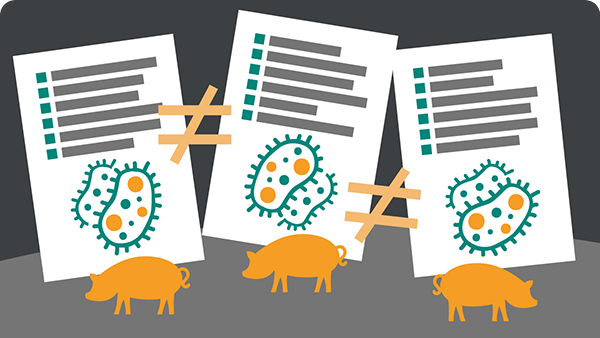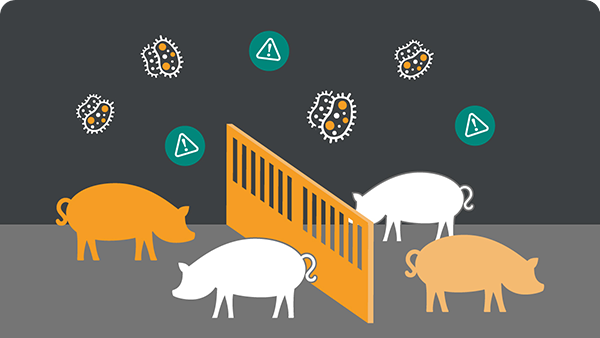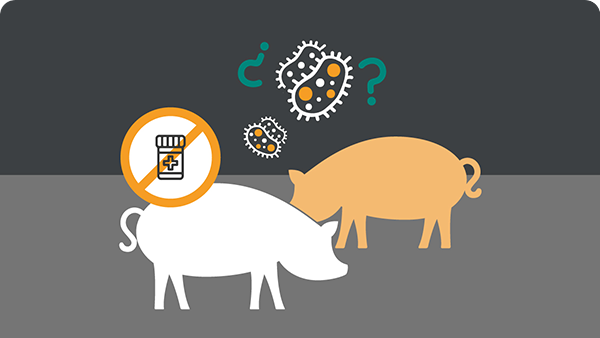
The disease
Epidemiology of ileitis

Epidemiology of ileitis
INTRODUCTION:
Ileitis or Porcine proliferative enteropathy (PPE) is widespread in swine herds in different production systems (30-93% of farms are infected) and in all parts of the world(1,2,3,4,5).
Serologic studies have shown that the prevalence of Lawsonia intracellularis positive herds range from 60 to 90% in different countries(6).
The economic impact of ileitis on the swine industry was estimated to be very high, with values ranging from $20/sow/year in Australia(7), to $20 million/year in the United States(8).
Despite its importance, we still do not know much about the epidemiology of L. intracellularis, especially regarding the sources of infection, the resistance of the bacteria in the environment and the possible biological vectors that could spread the infection between farms.

The Disease

L. intracellularis is a gram-negative rod with a sigmoid or curved shape and with a single long flagellum.

L. Intracellularis has specific infectious mechanisms, and generally appears in the growing and finishing stages.

Contact us
2 Giralda Farms
Madison, NJ 07940 United States
animal-health-communications@merck.com

















